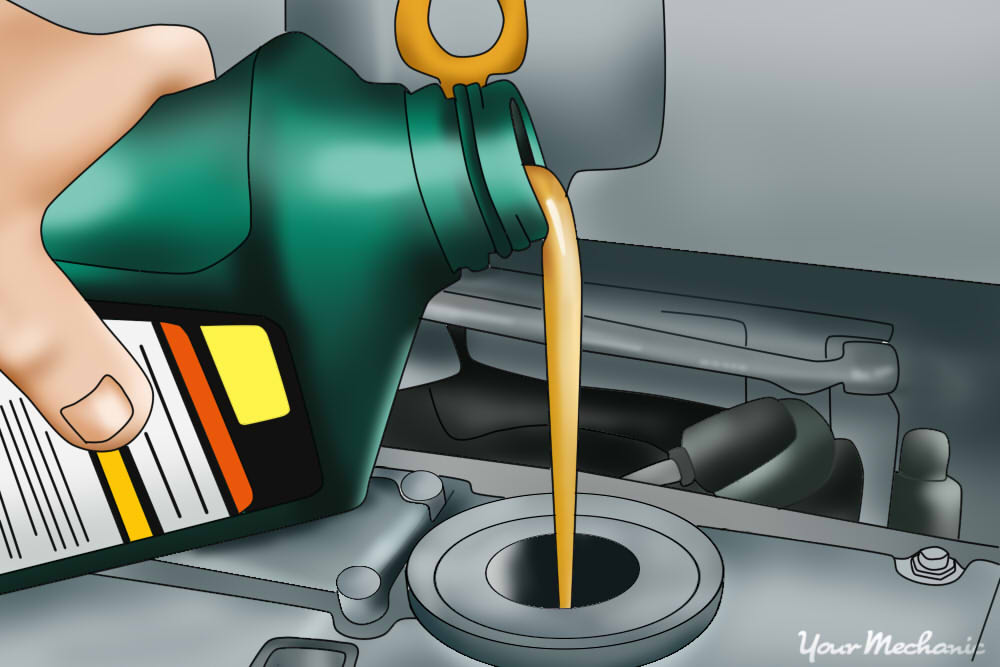

Adding oil is a simple, painless process. To understand how it works, you need to know that oil operates in a closed loop system and is stored in the oil pan. The oil pan holds up to 4 to 6 quarts depending on the car. When the engine starts, the oil pump sucks oil from the oil pan through the pickup tube, and then goes through the oil filter where any dirt and debris are removed.
It then circulates throughout the entire engine via spurt holes, finally heading back to the oil pan to start the cycle again.
You should always check your oil before adding new oil. If the dipstick is indicating a low oil reading, you will need to add some oil to the car.
Here is how to add oil to your car:
How to add oil to a car
Acquire the proper oil - Make sure you use the grade of oil that is recommended in the owner’s manual. Castrol provides a variety of options that may be suitable to your engine's needs.
Determine the weight - Oil is available in different “weights” and the oil container will indicate the weight or viscosity of the oil. Oil is usually sold in quarts. In most cases, one quart should do the job.
-
Determine the rating - A “W” in the rating means that the oil has been tested at colder (winter) temperatures. Oils that do not have a “W” are tested only at 210° F, which is considered a standard engine operating temperature.
Note: The majority of oils today are multi-grades, which basically means the oil falls into two viscosity grades, for example, 10w-40.
-
Pour in the oil - If the dipstick measured below the “Add” line you should pour in at least half of the quart of oil. You can use a funnel or pour it directly into the hole. Avoid spilling oil on the engine, as it will smell as it burns off, and be sure to wipe up any spills with a towel.
Tip: Overfilling your engine with oil can damage the engine, so the best method is to add a bit of oil and then recheck oil levels before adding more.
-
Re-check the oil levels with the dipstick - If the oil level is still below the “Add” indicator, add the rest of the quart and recheck the oil levels. When the oil level is close to the “Full” level, you are done.
Screw the oil filler cap back on - Test to make sure the oil cap has been properly screwed back on and is secure, and then close the hood.
Your vehicle is now full of oil and ready to go.
Recheck your oil levels in roughly 30 days.
If, for any reason, you are uncomfortable working on your vehicle, one of YourMechanic’s certified mobile mechanics would be happy to come to your home or place of business to check your vehicle fluid levels and add to or change the oil in your car.




